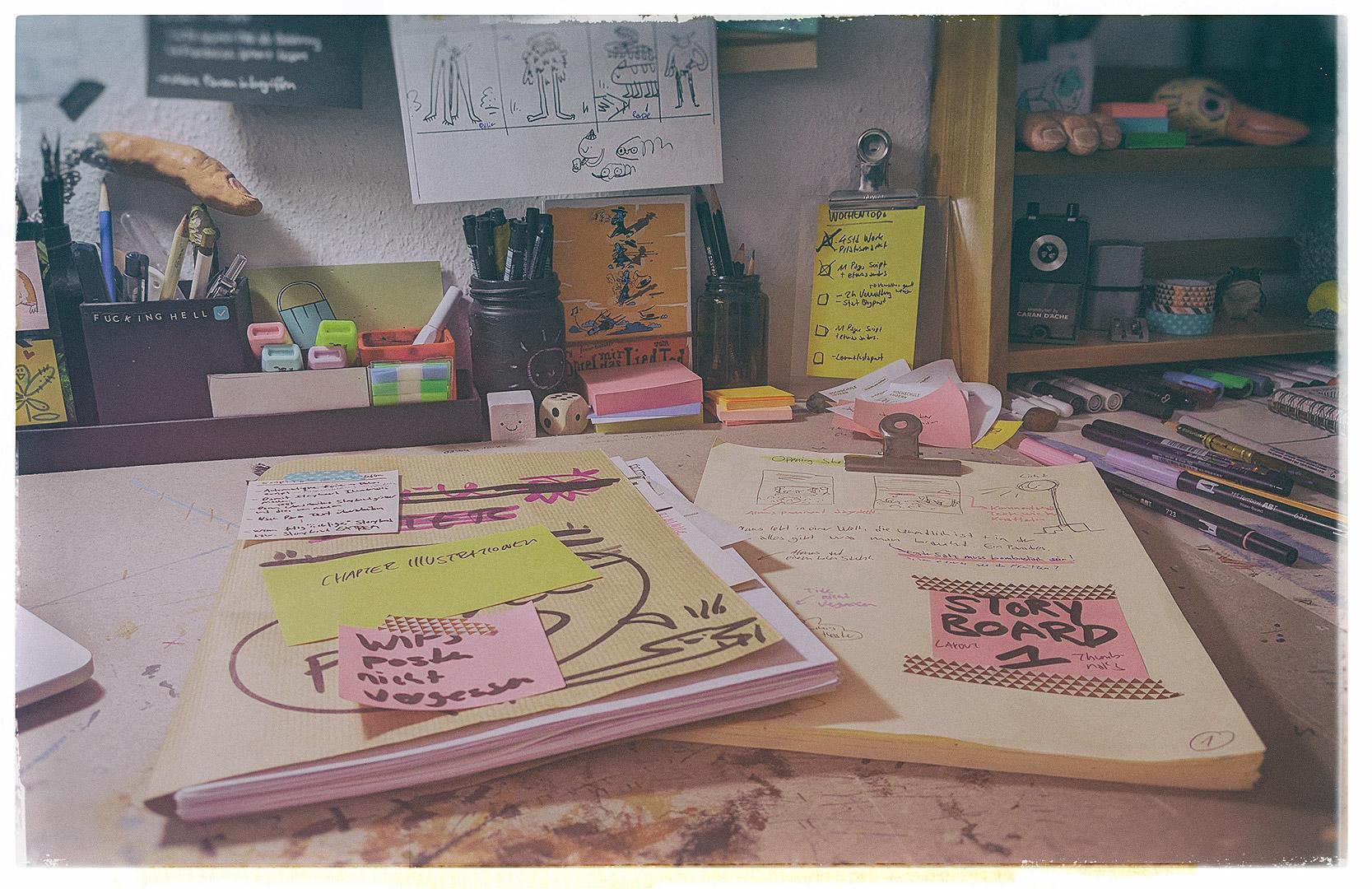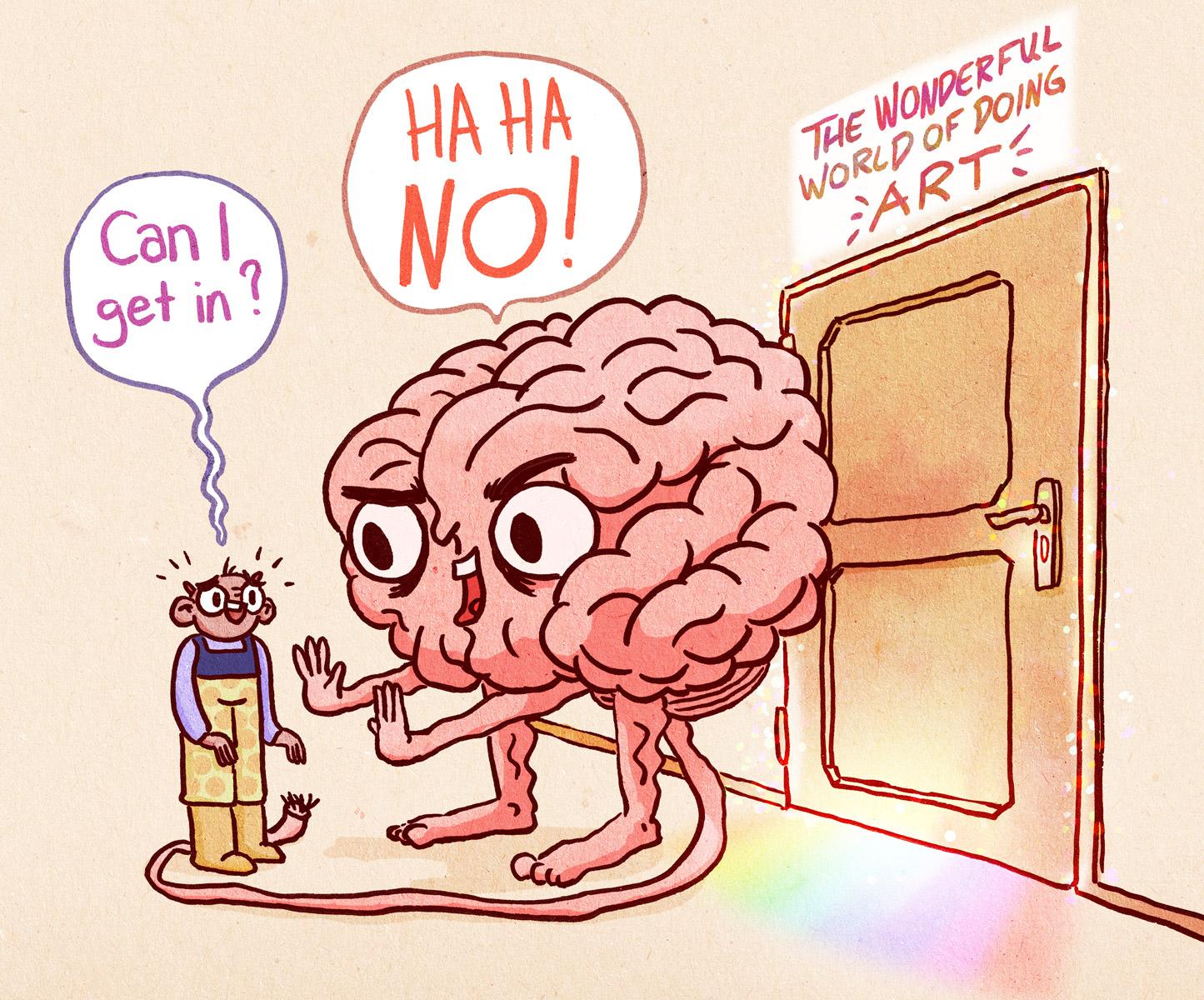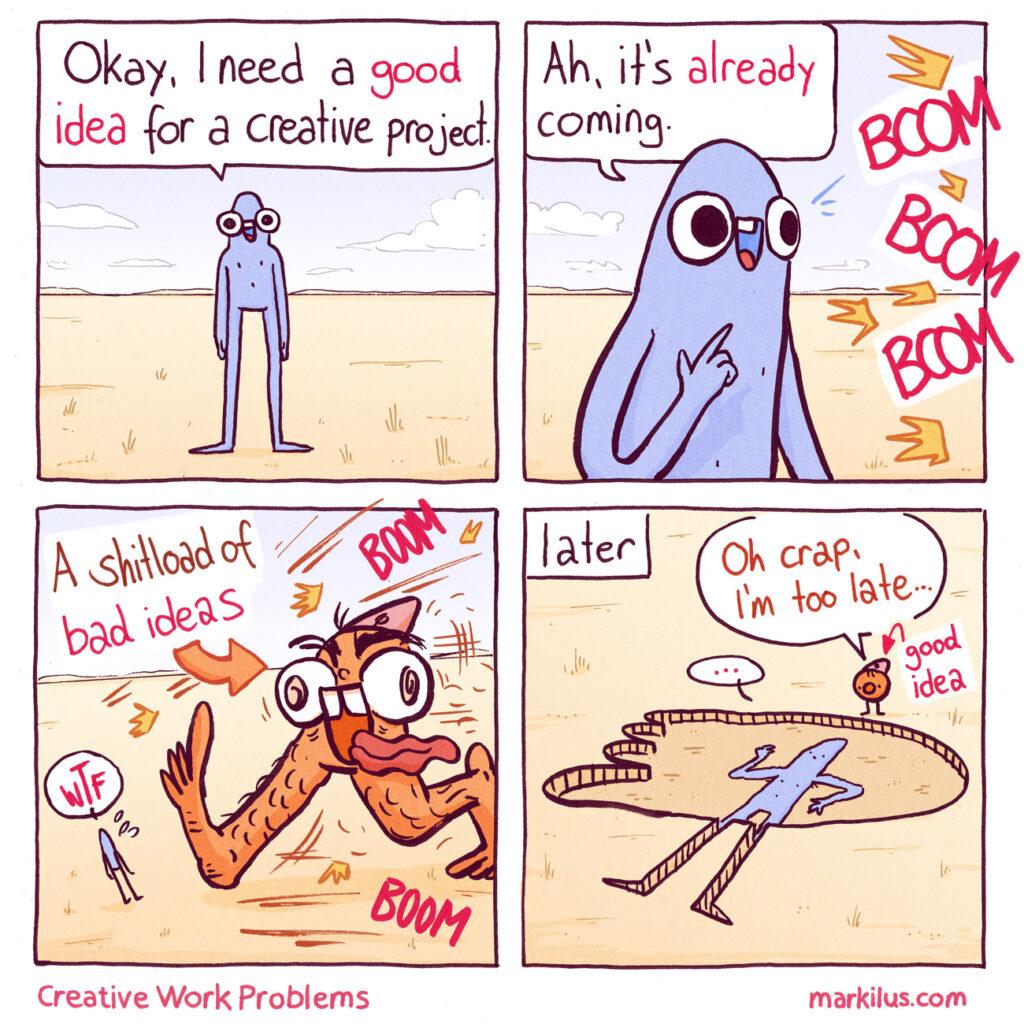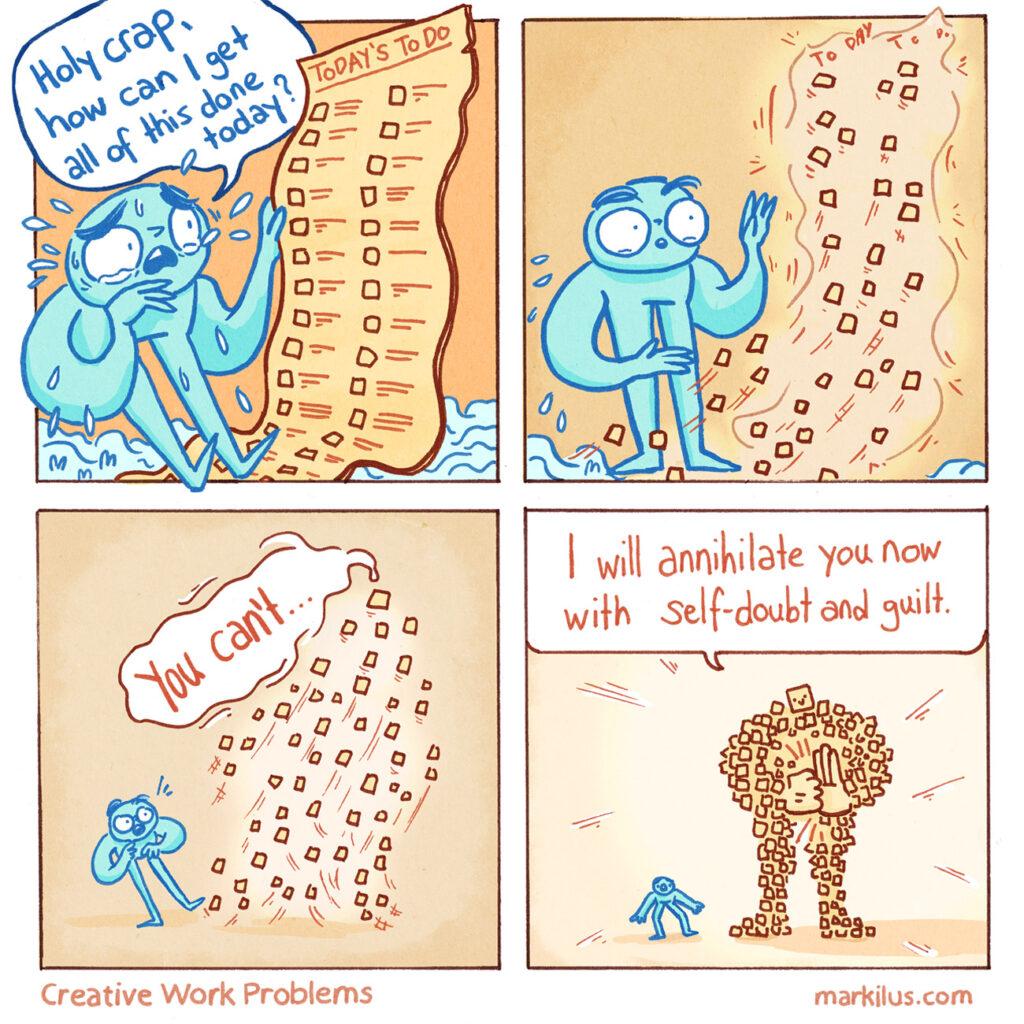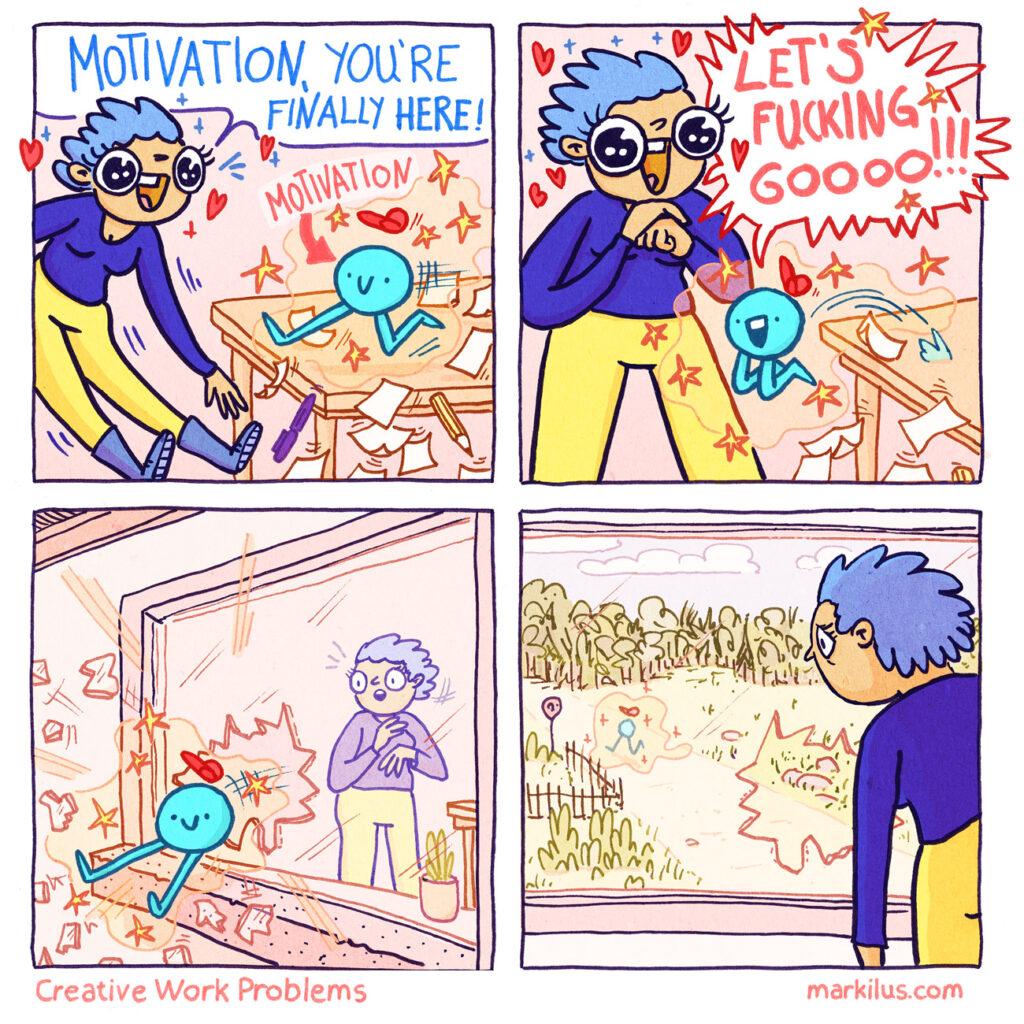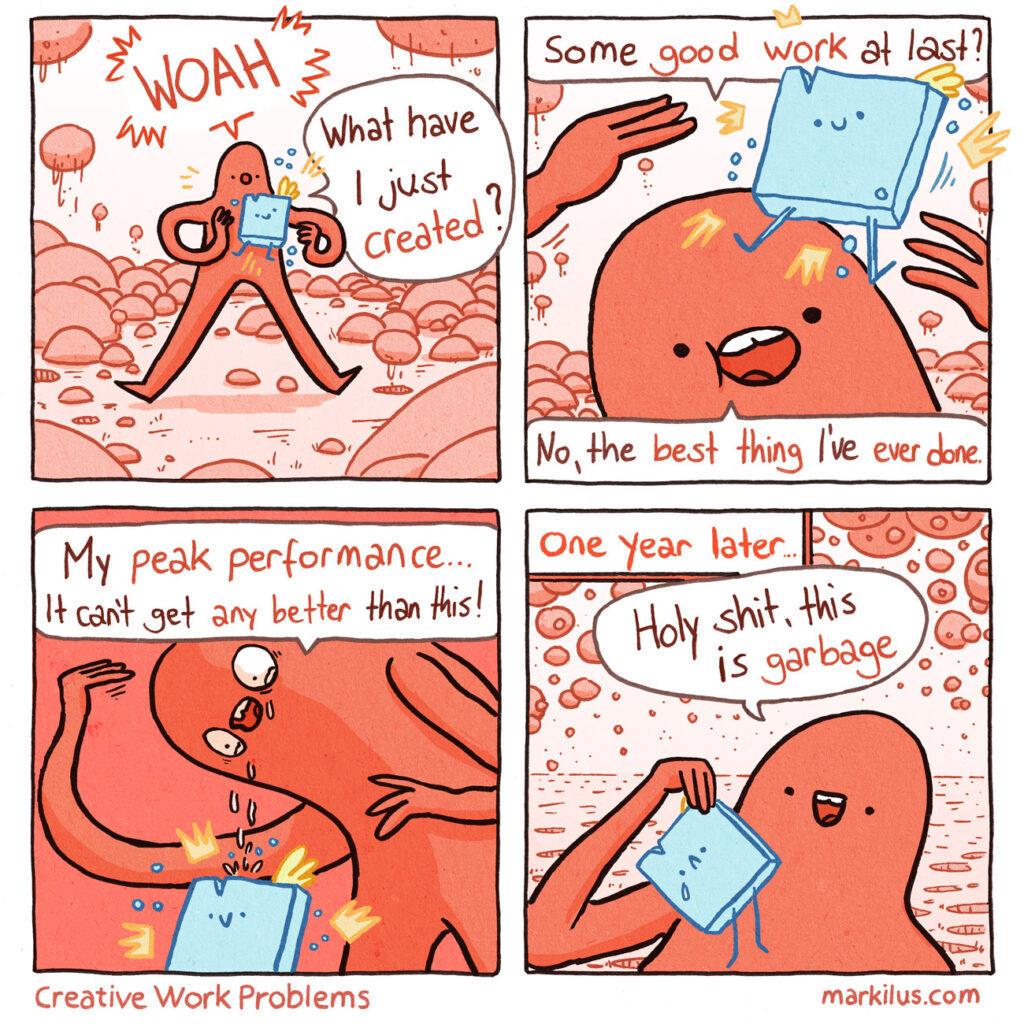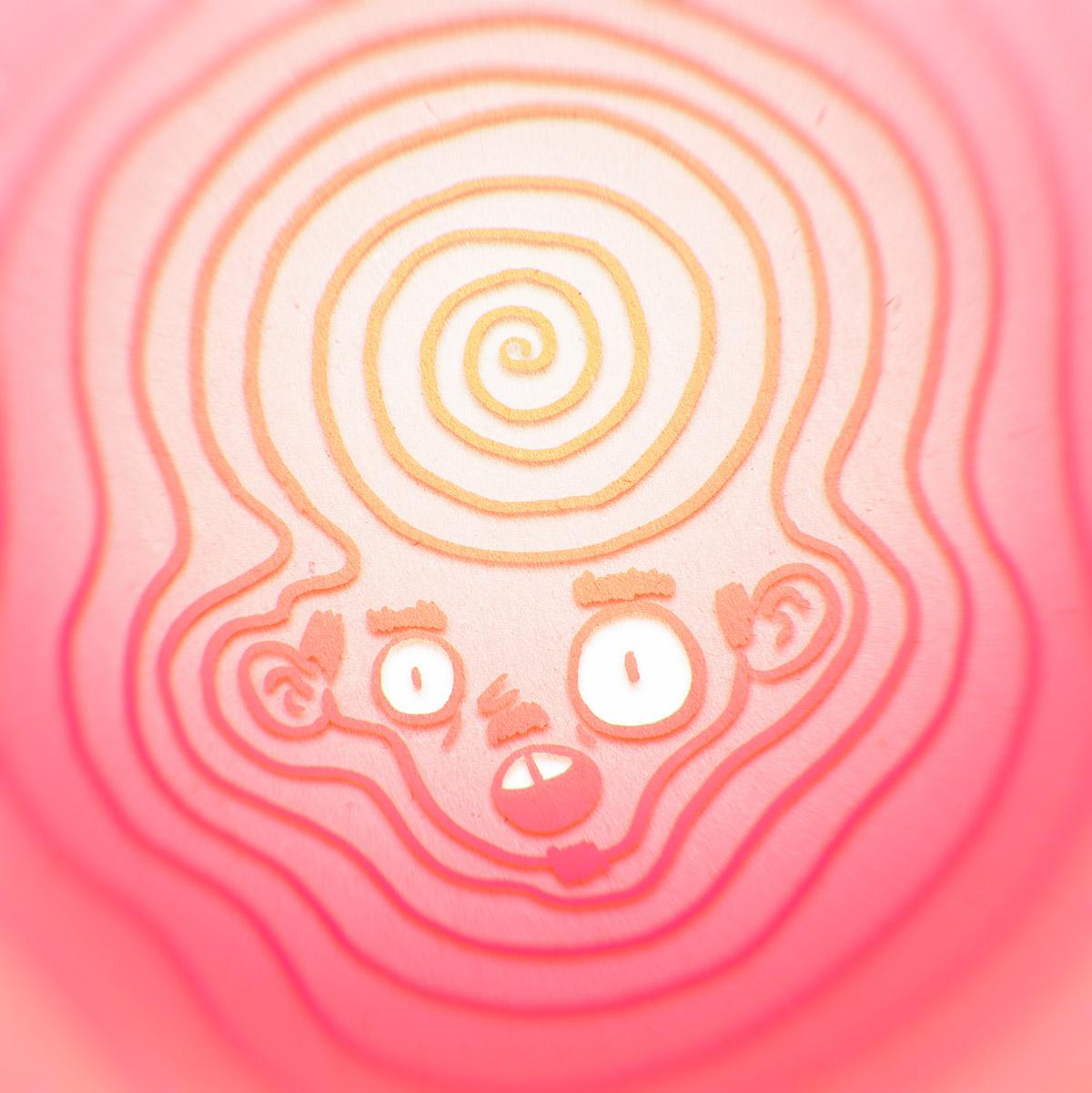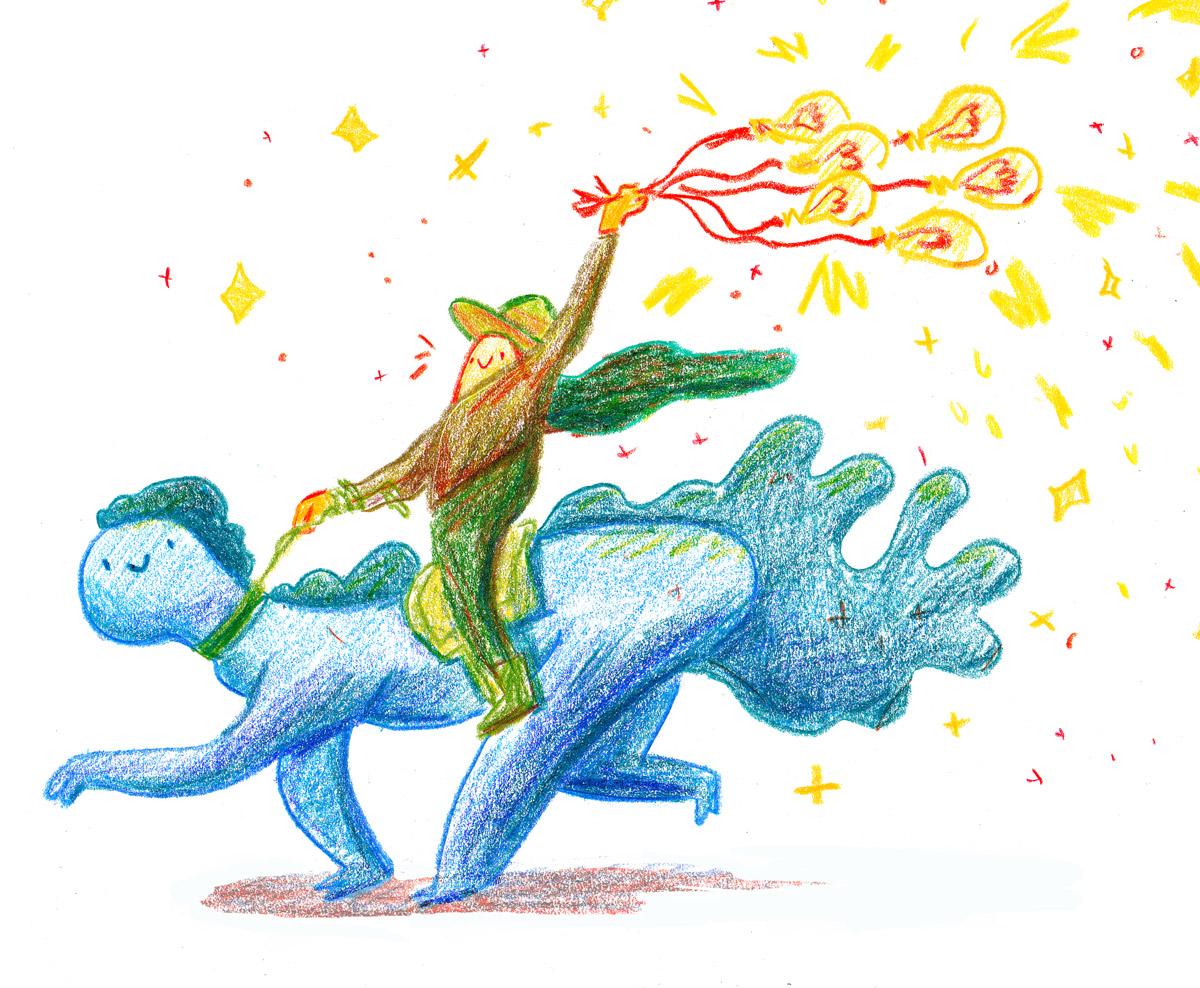
Oh, how we know that feeling. We’re working on our creative thing, whether it’s comics, drawings, or something else, and we just can’t come up with any good ideas. Our mind is empty. It seems that only shitty ideas are left in our heads. But it is important, especially in our creative work, that we can generate as many good ideas as possible because the variety of our work is what we need to make good things. Without many different (good) ideas, there will be no good creative work. And this is where we sometimes struggle. Just generating good ideas.
So how do we do that? We have to distinguish between two things: Belief in the process and techniques for generating ideas.
Belief in the Process
Belief in the process is critical to idea generation. Because sometimes we don’t do the right thing to get the right ideas. We sit around and wonder why this creative thing just doesn’t get better. Why does THE idea never come? We have to believe in the process and this is divided into several areas.
Area 1: Trust in Bad Ideas
We have to remember that not every idea we generate is good. We dig and dig and just come up with nothing good. But there may be one good idea among hundreds of bad ones. It doesn’t matter how many there are. The important thing is that we know we just have to keep working on possible ideas so that eventually the good ones we need will come. And they exist. You know they are somewhere because you have had them in the past. Believe in it! Deep under all that crap is something we can use. So let’s keep digging!
Area 2: Belief in Working on the Bad Ideas
Depending on the creative work you do, the process of turning bad ideas into something is important. For example, in drawing, sometimes the ideas come only when you start drawing. The same can happen with any creative work. If you make crap, at some point the idea of how to make something good out of the crap will come. Sometimes, even if you make a mistake, a good idea can come out of it. It’s very similar to when we have a hundred bad ideas in our heads. But if we work on it and use our hands (or feet, if you can work creatively with them), those good ideas will come by themselves. So: Work on your thing! Don’t wait for a good idea, start working on it and the good idea will come.
Area 3: Believing in Pauses
In addition, the creative process sometimes allows us to take a break. This is important because when we’re not working on our projects, an idea can suddenly come to us. So when things aren’t going well, it helps to just work on something else or take a break. Take a short walk outside, which has helped famous scientists to solve problems. Or get the idea in the shower. Over the years I have learned what is really important when taking these breaks: think about the problem every now and then. If you go for a walk without thinking about your project, you may never get an idea. But thinking too much is not good either, so it is important to find a middle ground.
When things aren’t going well, it’s important to remember these areas and not lose your head. Believe in the process! Believe in yourself! It helps you overcome anxiety and the pressure to come up with the perfect idea.
Techniques and Methods for Idea Generation
While it helps to believe in the process and keep working (or walking/showering) accordingly, good techniques for generating ideas are of course important. So here’s a list of my favorites and a few others. I distinguish between techniques where you don’t have an idea yet and techniques where you already have ideas.
Techniques and Methods Without Ideas
Brainstorming
Just about the best-known technique. And one of my favorites. You don’t have to brainstorm in words! You can sketch, paint, make whatever in a tiny size, and do variations to brainstorm. This will trigger area 2 from before because you are already thinking about ideas and making them. And don’t be afraid to make stupid ideas! Even the worst ones go on this list!
Mind Mapping / Clustering
So I’ve been reading Writing the Natural Way by Gabriele Rico and came across a technique called “Clustering”. It’s similar to mind mapping but you write down the associations of the word you use. So if you need ideas for a topic about trees, for example, you write down the first thing that comes to mind about the word “tree”. For me it is “green”, “leaves”, “book”, “reading”, “free time”, “walking” … etc. Sometimes these associations give you pretty good ideas that even have a deeper meaning. For example, a few months ago I did a comic called “Catch an Eye“. I asked my partner to give me a word and I’d make a comic out of it. She said “eye” and I used the clustering method to get ideas for the story.
Real-Life Experiences
Sometimes we forget that we have a real life to draw ideas from. So if you have a project that could have some connection to your past, search it for good ideas! Sometimes these are the best ideas because they add a personal touch to your project. The second thing is to go to places in real life where you can experience something similar to your project. For example: If you have to do something related to the Middle Ages, go to a history museum.
Word Ideas
If you can get ideas for your creative project from a few words, you could use random word generators on the Internet to get some ideas. You can even combine them. Sometimes when I draw a creature or character, I use some random words to get ideas of what they might look like. You could even point blindly at a book or newspaper to get those words.
Techniques and Methods with Existing Ideas
SO TAME Method
I used this in a Creative Work Problems comic. If you already have ideas, you can use them to get other ideas. Sometimes the bad idea just needs a different form to become good. The SO TAME method is a mnemonic for this:
- S – Slice it up
- O – Do the Opposite
- T – Take something away
- A – Add something
- M – Mix it
- E – Exaggerate it
Pretty much take your idea and do one or more of these things to it. Sometimes you will come up with some very unique ideas. I use it myself almost every day.
Two into One
Sometimes two things should be one idea. To me, that is what an idea essentially is: A mixture of two thoughts. So if you need a good idea, try to combine two things. Do you need a warrior character design? Why not mix a warrior with a baby and make a big baby warrior? Because warriors are “dumb” and so are newborn babies. Voila, we have a nice idea. Maybe this has already been done, I do not know. You can do this with anything that exists.
The “What if…” Method
Let’s say you have a story. But this story is pretty boring and you have no idea how to make it better. Well, there is a method called “What if …”. This method asks a question about an idea you already have. It lets you think differently and add things that you would never have thought of without it.
So let’s do this quickly: We have a story. Say a whale wants to find his true love. A whale that just swims around might work, but … what if … the whale lives in the sky? Now we have a nice setting that makes the story more interesting. And we go on … what if … the whale falls in love with a cloud that looks like a whale? Well, now we have a bad idea. But remember! You need stupid ideas to get to the good ideas. So just go with the “what if” method and you will find the good stuff. You don’t have to keep everything. Maybe with this method, we’ll find a cool story about the whale finding love, but it’s not going to happen in the sky.
SCAMPER Method
I stumbled upon this method while researching this blog post. I haven’t used it yet, but it sounds promising. It is similar to my SO TAME method. This SCAMPER method allows you to think outside the box. The acronym stands for Substitute, Combine, Adapt, Modify/Magnify/Minimize, Put to Other Use, Eliminate, and Rearrange/Reverse. The method involves applying these seven strategies to existing ideas to create new ones.
Substitute involves replacing elements in the idea with alternatives. Combine suggests combining two or more ideas. Adapting involves modifying existing ideas to fit new contexts. Modify/Magnify/Minimize involves changing the size or scale of an element. Put to other uses suggests using a concept in a different context. Eliminating involves removing an element or simplifying an idea. Rearrange/Reverse involves changing the order or direction of elements.
Conclusion
Generating good ideas can be a daunting task, but it is essential for success in any creative field. Believing in the process is crucial because it helps you overcome the fear of failure and the pressure to come up with a good idea. You must understand that generating good ideas is a journey, not a destination, and you must be patient with yourself.
In addition, you can use several techniques and methods to generate good ideas. Brainstorming, Mind Mapping / Clustering, and SCAMPER are just a few examples of the many tools available to help you generate new and good ideas. The key is to experiment with different techniques and find what works best for you.
Ultimately, coming up with good ideas requires a combination of creativity, persistence, and hard work. By believing in the process and using effective techniques and methods, you can generate a wealth of new and exciting ideas that will help you achieve your goals and create good stuff for others to enjoy! Now keep on making!
